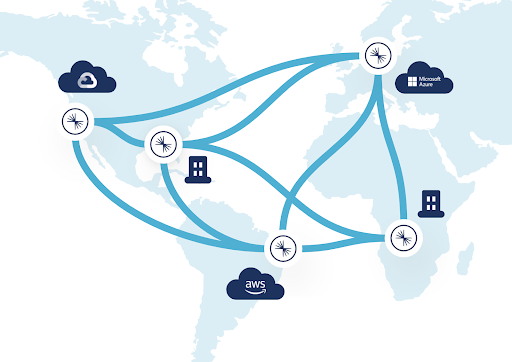Data Management & Analytics
Data Management, Analytics, Data Integration and Data Quality, Business Intelligence (BI)Confluent Sets Data in Motion Across Hybrid & Multicloud Environments for Real-Time Connectivity Everywhere

Confluent, Inc. (NASDAQ: CFLT), the platform to set data in motion, today announced that Cluster Linking is available on Confluent Platform 7.0. Combined with its earlier release on Confluent Cloud, Cluster Linking can now be used in any environment, everywhere an enterprise’s data and workloads reside. Now, organisations can securely stream data across hybrid and multicloud environments without needing to manage additional layers of complex tooling across disparate and siloed architectures. With a reliable, persistent bridge for real-time data sharing, organisations can quickly mobilise their data across their business to drive next-generation digital experiences and operations while maximising the value of their cloud initiatives.
“There’s a massive shift to the cloud that is inadvertently creating pockets of siloed data across organisations,” said Ganesh Srinivasan, Chief Product Officer, Confluent. “It is now more important than ever for businesses to solve these data connectivity challenges as their success depends on it. With Cluster Linking, the data across all the parts of a company–from cloud, on-premises, and everything in between–can be quickly connected in real time to help modernise businesses and build stand-out applications.”
Hybrid and multicloud computing are now standard for most businesses. According to Ventana Research, nearly two-thirds (63%) of enterprises today have infrastructure that spans multiple public clouds or hybrid environments with the number expected to increase to three-quarters (75%) by 2023. Although these architectures are mainstream, many are struggling to keep data synced and flowing throughout their businesses in real time. Most organisations rely on manual, batch-based data transfers or brittle point-to-point connections between environments, which consumes valuable engineering time, creates technical debt, and delays strategic projects and initiatives. Out-of-date processes like these hold organisations back from realising the full benefits of cloud with increasing operational overhead, rising costs of ownership, and growing risks and security vulnerabilities.
Cluster Linking: Seamlessly Connect Applications and Data Systems Across Hybrid and Multicloud Architectures
“To ensure we are meeting all of our clients’ requirements across virtual and in-person conferences and trade shows, we need to ensure our platform has the scalability and reliability required to run a massive influx of digital experiences without fail,” said Adam Lacey, Senior Director, Application Development and Enterprise Architecture, Freeman. “The solution we’re building with Confluent’s Cluster Linking capability helps ensure that our mission-critical applications run smoothly without data loss across both our cloud and on-premises environments. Using Cluster Linking as a persistent, reliable, and secure hybrid cloud bridge will also help us accelerate our expansion into the cloud.”
Cluster Linking bridges on-premises and cloud environments, moving data in real time to wherever a business needs it. That includes major cloud providers like AWS, Google Cloud, and Microsoft Azure, in addition to private clouds and traditional datacenters. It seamlessly links Confluent clusters, regardless of their environment or geographical location, enabling organisations to securely replicate data and migrate to the cloud with low downtime. There’s now a single connection pattern for data to travel across a business in real time, which significantly alleviates architectural complexity and reduces technical debt. Global teams also benefit from self-service access to data in real time with data perfectly mirrored in different regions across the organisation.
“Our transformation to a cloud-native, agile company required a large-scale migration from open source Apache Kafka, which was complex and challenging to self-manage,” said Justin Dempsey, Senior Manager, Software Development, Cloud and Information Services, SAS. “Cluster Linking played a critical role in making the shift to Confluent for Kubernetes and more cloud-native solutions a success with no downtime and minimal dependencies. With Confluent, we now support real-time data sharing across all of our environments, and see a clear path forward for our hybrid cloud roadmap.”
Introducing Confluent Platform 7.0
To enable any business to set data in motion, Confluent Platform 7.0 also features new cloud-native management capabilities and improved cloud-based monitoring for on-premises clusters.
New cloud-native management capabilities for Confluent for Kubernetes
“To continue our journey to the cloud, we needed a platform that would allow us to move workloads gradually while offering the benefits of cloud-native data systems with the control and customisation available from managing infrastructure on-premises,” said Keith Silvestri, Chief Technology Officer, KeyBank. “Confluent for Kubernetes allows us to build our own private cloud Kafka service by using a complete, declarative API to deploy and operate Confluent. By automating many complex and time-consuming operational tasks, our platform team is able to focus on higher-value activities that drive the business.”
With the launch of Confluent for Kubernetes, Confluent made it easier than ever to build and manage a private cloud Apache Kafka® service, whether on VMware Tanzu, Red Hat OpenShift, or other private cloud solutions. In this latest release, organisations can now provision and manage connectors, schemas, and cluster links through the complete, declarative API rather than through manual processes. These new cloud-native management capabilities help organisations reduce operational burdens for their engineering teams and achieve faster time to value with the platform. In addition, Confluent for Kubernetes elastically scales clusters up or down to meet demand through its new Shrink API. This offers greater flexibility as business demands change, enabling teams to cost-effectively handle any data in motion workload without needing to overprovision infrastructure.
New Reduced Infrastructure Mode for Confluent Control Center leverages Confluent Health+ to lower cluster monitoring costs
“Being a critical component of our new CRM and Customer 360 solutions, it was essential that we be able to quickly and easily monitor our Confluent clusters to ensure that they are performing efficiently and that there are no failed components,” said Larry Wilson, Data Architect, Farm Bureau Insurance of Michigan. “Within minutes of configuring Confluent Health+ for our cluster we received an alert notification of a problem with one of our brokers. The notification email not only identified the issue, but included possible corrective action steps to take. With this information, we were able to quickly resolve the problem before it began to cause performance issues. With the recent addition of the monitoring of connectors to Health+, we are now also automatically notified of failed connectors and are able to rectify these problems before they are felt by downstream systems.”
Confluent Control Center centrally manages and monitors key components across Confluent Platform to increase visibility and reduce costly business disruption and downtime. Historically, the GUI tool required data for monitoring clusters to be stored locally. As clusters scaled however, those storage requirements became increasingly expensive and burdensome.
To solve that hurdle, organisations can now leverage Reduced Infrastructure Mode for Control Center to strictly use its management capabilities while offloading monitoring to Confluent Health+. With Health+, organisations can leverage intelligent alerting and cloud-based monitoring capabilities to greatly reduce the risk of cluster downtime and eliminate the need to store monitoring data on-premises. This removes expensive and intensive storage requirements, reducing organisations’ infrastructure monitoring costs by up to 70%.
For a look at all the new innovations in Confluent Platform 7.0, check out this blog post.










